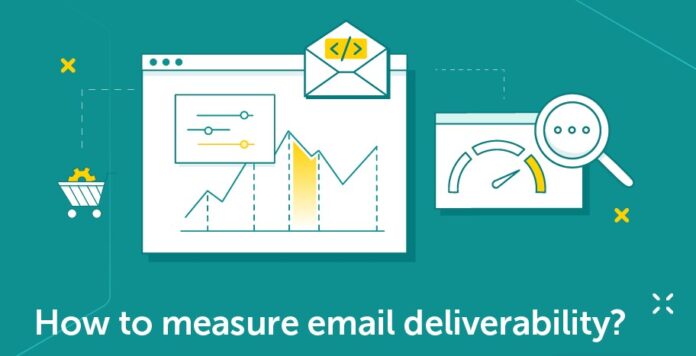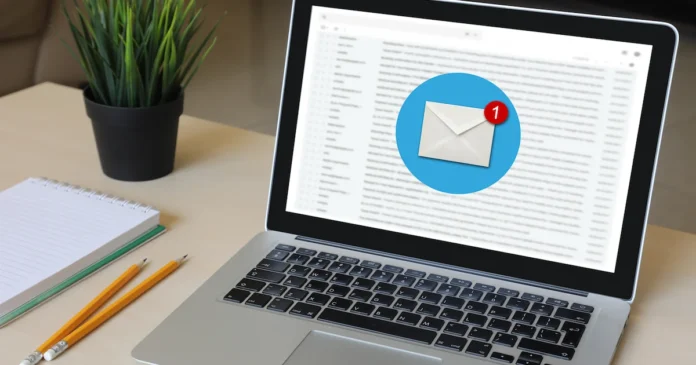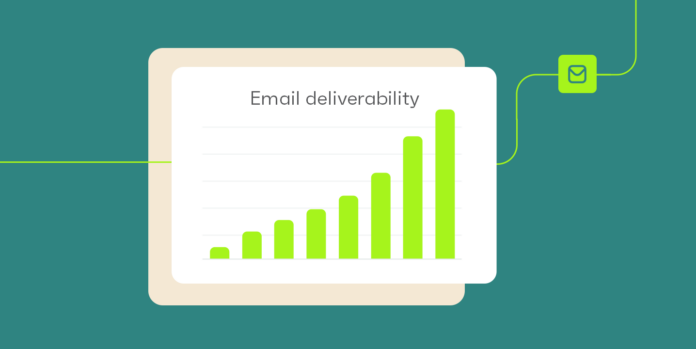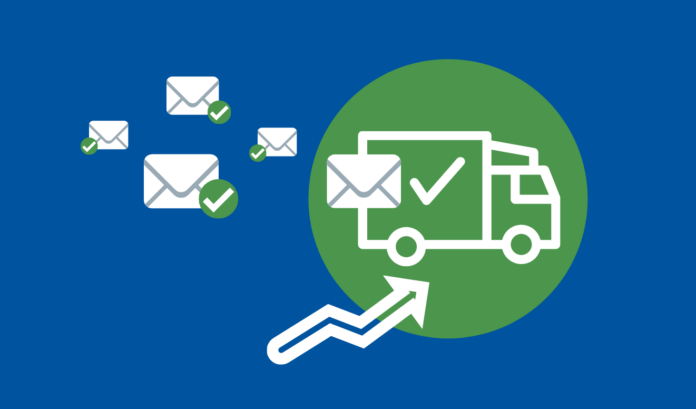Are you struggling to have your emails delivered? Email deliverability is the process of ensuring they reach their intended recipients without any hitch.
Improve your email deliverability by following the tips in this blog. You will soon be able to reach out to more of your customers and prospects!
How to Measure Email Deliverability

Measuring deliverability is an important part of ensuring that your emails reach the inboxes of your intended recipients. The first step in monitoring deliverability is to measure two critical components — delivery rate and bounce rates.
With the increasing demand for personalized and relevant email communication, it’s crucial to stay up-to-date with the latest email marketing trends and tools.
Delivery rate can be measured by tracking how many of your sent emails are delivered versus how many are bounced back from mail servers as undeliverable. This measure will give you a better understanding of the health of your sending reputation and help identify potential issues such as incomplete addresses, security-related issues, DNS errors, or temporary server downtimes.
Monitoring delivery rate and bounce rate is essential in measuring and improving email deliverability. Along with monitoring these two elements, it’s also important to use other techniques such as maintaining accurate list hygiene protocols and implementing authentication standards like SPF/DKIM/DMARC records which will ensure that your messages are authenticated with ISPs before they reach the intended recipient’s inbox.
Best Practices for Improving Email Deliverability

The following guidelines are key steps for improving email deliverability:
- Adhere to Authentication Standards: Authentication standards, such as DKIM, SPF and DMARC, add an extra layer of security when sending them by verifying the sender’s identity. This verifies that the message is truly coming from you and not from someone pretending to be you.
- Obtain Permission: Asking people to opt-in before sending them should be standard practice in order to ensure every one of your contacts wants to hear from you. By doing this, you can start building trust with your contacts immediately and prove that your intentions are honest when it comes to email deliverability.
- Monitor User Engagement: Email providers measure user engagement when determining which messages go into which inbox folders (i.e., Primary vs Spam). Monitor open rate, reply rate, bounce rate and unsubscribe rate in order to prioritize users who are actively engaging with emails instead of those who are not interested or non-existent recipients (i.e., hard bounces).
- Clean Your List Regularly: Keeping an up-to-date list is essential because inactive subscribers or robots can negatively affect certain metrics used by major ISPs such as Gmail that could eventually jeopardize email deliverability for all senders on your list due its shared IP pool system – check out our blog post about IP reputation here if this concept interests you!
- Comply with GDPR and CAN-SPAM Regulations: Following data protection laws (i.e., GDPR) along with anti-spam regulations (i.e., CAN SPAM) will deter third parties from getting involved and help reduce unwanted complaints or spam flags that could lead ISPs like Gmail labeling any future mails as spam instead of delivering them directly into the primary inbox folder!
Strategies to Avoid Email Deliverability Issues

It’s closely related to email reputation, which is determined by the quality of the content and behavior of the sender.
In order to ensure that they have a good chance of making it into users’ inboxes, there are a few strategies that businesses should adhere to:
- Authenticate email using SPF and DKIM authentication. This helps ensure only legitimate senders are able to use your domain in them and helps protect against spoofing and spoofed replies.
- Regularly monitor your sending IP address reputation on blacklists such as Spamhaus or SURBL.
- Keep an eye on your bounce rates and unsubscribe rates. If these start getting too high then it could be an indication that you need to work on improving your content or send fewer ones in general.
- Ensure you’re getting opt-ins for all emails sent out and make sure unsubscribes are honored promptly so recipients don’t end up being marked as spam when they didn’t mean to be.
- Pay attention to how they render across different devices, browsers, and email clients; this can help reduce deliverability issues associated with poorly rendered messages being marked as spam by certain filters or clients.
By adhering to these strategies, businesses can help ensure they have a greater chance of reaching their intended recipients, thus avoiding deliverability problems altogether.
Tips for Increasing Email Deliverability

To maximize the effectiveness of your campaigns, you must ensure that your messages are delivered to a large number of recipients. This process is known as email deliverability and involves several factors, such as the quality of your mailing list, content relevancy and hosting provider.
The following are some tips for improving email deliverability to ensure that a maximum number of customers receive them:
- Create a comprehensive list management program: Managing an email list is critical for successful campaigns; regularly prune and update lists to avoid spam traps.
- Avoid the use of spam words: Commonly used words like ‘free’ can trigger spam filters; use different words that have the same meaning instead.
- Pay attention to opt-in procedures: Use text boxes and radio buttons as they make it easier for users to sign up. Few people will fill up fields with long forms, but they may do so if options are limited or automated.
- Segment campaigns: Sending unique messages targeted at specific audiences has been found to significantly add to customer engagement levels; segment emails on interests, demographics etc., which also improves user experience.
- Monitor delivery rate: Regularly monitoring delivery rate will alert you if something is wrong with an address or content in time for you to correct mistakes/ adjust accordingly before moving out more messages into similar patterns of failure (if any).
Conclusion

By following the tactics outlined in this guide, businesses can not only optimize their email deliverability but also see increased engagement rates and positive outcomes from their email campaigns.









